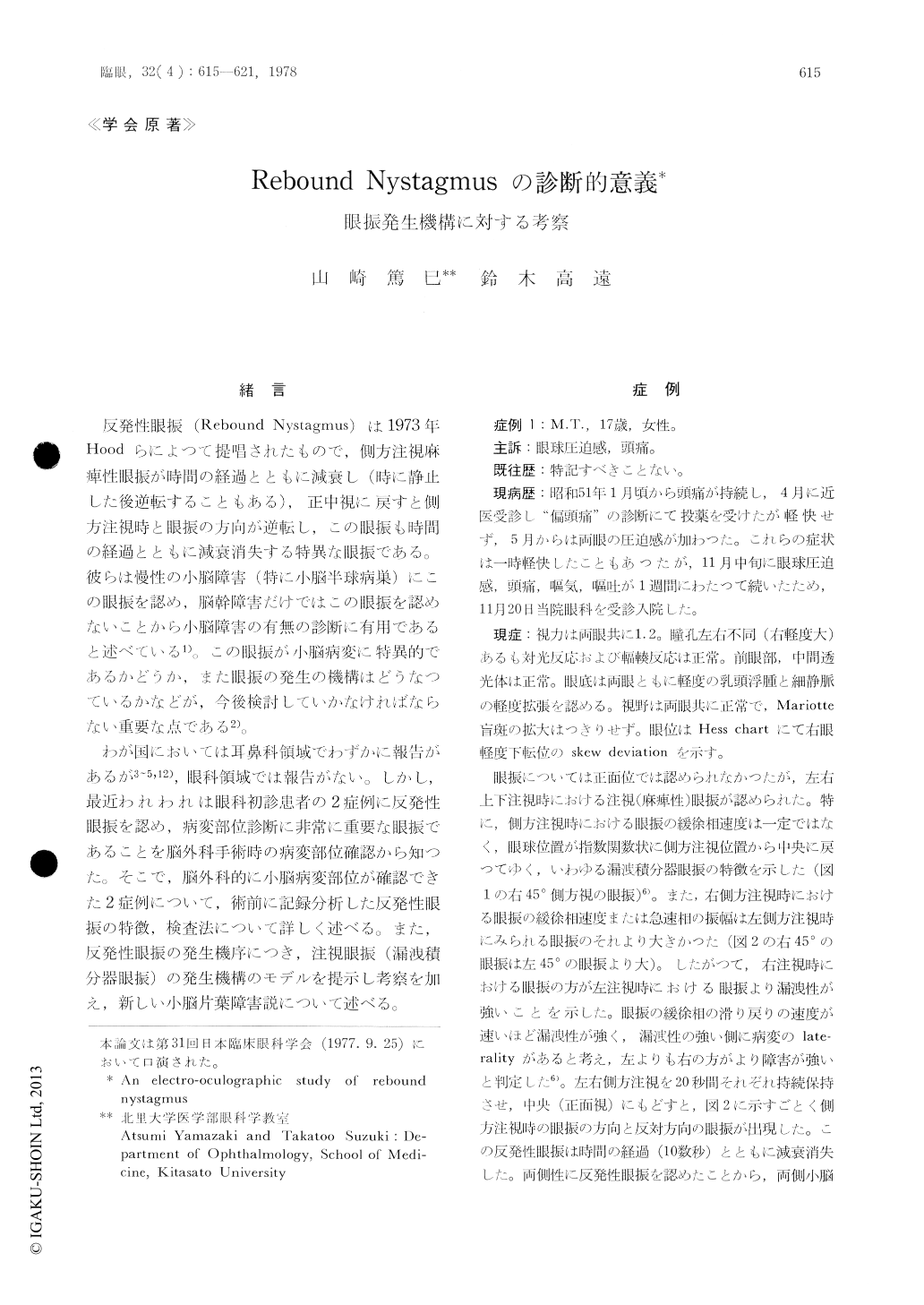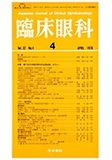Japanese
English
- 有料閲覧
- Abstract 文献概要
- 1ページ目 Look Inside
緒 言
反発性眼振(Rebound Nystagmus)は1973年Hoodらによつて提唱されたもので,側方注視麻痺性眼振が時間の経過とともに減衰し(時に静止した後逆転することもある),正中視に戻すと側方注視時と眼振の方向が逆転し,この眼振も時間の経過とともに減衰消失する特異な眼振である。彼らは慢性の小脳障害(特に小脳半球病巣)にこの眼振を認め,脳幹障害だけではこの眼振を認めないことから小脳障害の有無の診断に有用であると述べている1)。この眼振が小脳病変に特異的であるかどうか,また眼振の発生の機構はどうなつているかなどが,今後検討していかなければならない重要な点である2)。
わが国においては耳鼻科領域でわずかに報告があるが3〜5,12),眼科領域では報告がない。しかし,最近われわれは眼科初診患者の2症例に反発性眼振を認め,病変部位診断に非常に重要な眼振であることを脳外科手術時の病変部位確認から知つた。そこで,脳外科的に小脳病変部位が確認できた2症例について,術前に記録分析した反発性眼振の特徴,検査法について詳しく述べる。また,反発性眼振の発生機序につき,注視眼振(漏洩積分器眼振)の発生機構のモデルを提示し考察を加え,新しい小脳片葉障害説について述べる。
Quantitative analyses of rebound nystagmus were carried out in two patients with surgically confirmed cerebellar tumors. Gaze nystagmus, smooth pursuit movements, saccadic movements and vestibular eye movements were studied with DC electro-oculography in these patients. These studies are as follows.
(1) Rebound nystagmus was seen with lesions in the cerebellum, especially the flocculus.
(2) The patient could not produce smooth pursuit movements to the side of the cerebellar lesion, but normal saccadic eye movements could be elicited.

Copyright © 1978, Igaku-Shoin Ltd. All rights reserved.


